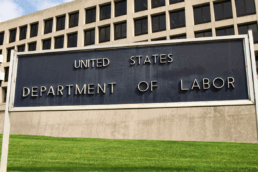On January 25, President Trump ordered the Department of Homeland Security (DHS) to hire an additional 15,000 law enforcement officers. Since then, the Office of Inspector General (OIG) has been conducting a special report to determine whether that is even possible.
So what did the OIG find? The OIG has determined that without comprehensive staffing models, operational needs analyses and comprehensive deployment strategies, CBP and ICE will not be able to identify clearly the correct number and type of employees required, what positions must be filled or where to deploy those employees. These findings indicate that the DHS may not have the resources needed to hire 15,000 additional officers, and it is likely to encounter notable difficulties:
- Trouble Recruiting Suitable Candidates. The Department, CBP and ICE are facing significant challenges in identifying and recruiting qualified applicants. Without enough sufficiently trained HR staff and comprehensive recruiting strategies to attract them, even the best workforce staffing plans would be unachievable.
- Trouble Hiring. Hiring and fielding the number of law enforcement officers mandated in the Executive Orders will not happen overnight. Hiring is already a challenge for these agencies. CBP estimates that it would need to review roughly 750,000 applicants to find the 5,000 new agents the President is calling for, and ICE would need about 500,000 applicants to hit its target of 10,000 additional officers. These agencies would also need to add roughly 9,600 technical and operational support staff in order to facilitate a hiring surge of this magnitude. On top of that, the actual hiring process of CBP and ICE officers is lengthy and difficult. Applicants need to pass background checks, drug screenings, physical fitness tests and a polygraph exam, among other hurdles. This has led to difficulty in adding new officers, and it has even sparked legislation in the House and Senate aimed at simplifying the process. The “Boots on the Border Act” would give CBP greater hiring authority and prioritize the hiring of veterans for Border Patrol Jobs, and the “Anti-Border Corruption Reauthorization Act” seeks to scale back polygraph testing for applicants with previous military or government clearance.
- Trouble Deploying Additional Personnel. Even if the DHS manages to hire 15,000 additional officers, it will likely struggle to identify and align its components’ operational needs with efficient, effective and economical deployment strategies. In other words, the DHS has yet to identify just where and how it plans to use all of the additional agents.
Adding 15,000 additional law enforcement officers will prove to be a logistical nightmare. The DHS, CBP and ICE will face many struggles, but the outcome has the potential to impact border security in a positive way. CBP is already more than 1,700 agents below the congressionally mandated floor of 21,370, and according to the union that represents CBP officers, the “extra help is urgently needed.”
If you are interested in immigrating to the United States and have questions, please contact our office to schedule a consultation with one of our attorneys today!
Ready to have Berardi on your side?
Whether you’re a business looking to hire or a professional hoping to relocate, immigration law can be complicated. But you don’t have to do it alone. Put our experience to work for you.



